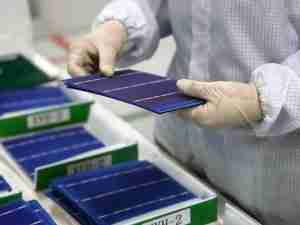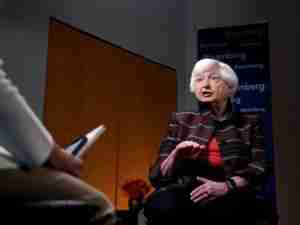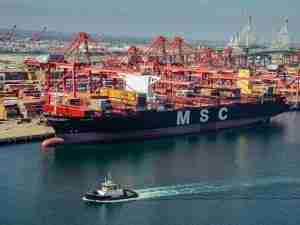Thyssenkrupp AG, Germany’s largest steelmaker, swung to a net loss in the fiscal first quarter as the industry reeled from a slide in prices wrought by record Chinese exports. The net loss was 23 million euros ($26 million) in the three months through Dec. 31 compared with net income of 50 million euros a year earlier, the Essen-based company said Friday in a statement. Adjusted earnings before interest and taxes declined 26 percent to 234 million euros, just missing the 239.6 million-euro average of 11 estimates compiled by Bloomberg. The company reiterated a full-year profit target of 1.6 billion to 1.9 billion euros. Chief Executive Officer Heinrich Hiesinger, who took the role in 2011 after the company had been roiled by a bribery scandal and a failed expansion in the Americas, is trying to turn the steelmaker into a more diversified industrial group. He wants adjusted annual Ebit to increase to at least 2 billion euros to help cut debt, pay dividends and regain an investment-grade credit rating. The group, which traces its roots to 1811, got almost half its annual profit from its elevator unit. “Even the technology units are slightly below expectations” while it’s mainly margin pressure on the steel business that’s weighing on the company’s earnings, Marc Gabriel, an analyst at Bankhaus Lampe KG in Dusseldorf, said by phone. The profit forecast “is very ambitious, it’s hard to believe” it will be met, he said.
‘Right’ Path
Thyssenkrupp shares closed 8.7 percent higher in Frankfurt, the biggest increase since 2011, and the third-largest gain in Germany’s benchmark DAX Index. Material and resource companies around the world jumped Friday, with steel producer ArcelorMittal climbing 8.4 percent. “The solid performance of the capital-goods businesses confirms that the path we are taking to become a diversified industrial group is right,” Hiesinger said in the statement. At last month’s annual general meeting, an investor called upon the company to sell one of its technology units. Thyssenkrupp said it had cut costs by 250 million euros. It may exceed its annual savings target of 850 million euros, Chief Financial Officer Guido Kerkhoff told Bloomberg Television in an interview.
Materials Unit
“The materials business continues to cause us concern,” Hiesinger said in Friday’s statement. The company said it needs “a significant recovery of the materials markets in the second fiscal half” to achieve its profit and free-cash-flow targets. The world’s largest steel companies are suffering from China’s slowdown which is sapping demand and fueling a global glut as the nation floods the market with cheap exports. The European Union on Friday imposed tariffs as high as 26 percent on Russian and Chinese makers of non-stainless products after it found imports from the two countries unfairly undercut producers in Europe. Hiesinger is “encouraged” by the EU’s wording, he told investors on a call. Anti-dumping measures could be helpful, while price increases make up a third of what the company needs to meet its profit target, Kerkhoff said. There are signs that steel prices may be bottoming as they stabilize in Europe and slightly increase in the U.S. and China, he told reporters on a conference call. European hot-rolled coil, a benchmark for steel prices, this month sank to the lowest since at least 2007. First-quarter sales fell 4.9 percent to 9.55 billion euros. Negative free cash flow before mergers and acquisitions widened by 38 percent to 847 million euros, mainly because of a temporary increase in net working capital. Adjusted Ebit at the company’s European steel business fell 35 percent to 51 million euros in the quarter. Steel America, the only unit to post an adjusted loss before interest and taxes for the
last fiscal year, reported a quarterly loss of 74 million euros compared with break-even a year earlier. That resulted in the first adjusted loss of the materials units in nine quarters.








